In 1931, Clark Gable was “On the Up and Up”
This week I have been digging through Photoplay magazines from 1931–the earliest year of fan magazines my Gable-hunting self would dig through, because before 1931 Clark Gable didn’t exist in Hollywood. He was a nobody and not worth mentioning. In fact, that is the case for most of 1931. He is not even mentioned at all in film reviews for films like Night Nurse and The Easiest Way. It is not until A Free Soul comes along in the summer that his name starts popping up.
In September, the Questions & Answer section of Photoplay, where readers write in and ask random questions about their favorite stars, noted this:
Hundreds of letters received this month asked for information about Clark Gable. The present screen idols are going to have to defend their laurels, with Clark gaining a stronger foothold in every picture. Fans seem to have gone hook, line and sinker for him.
History reveals that Clark was born in Cadiz, Ohio, February 1, 1901. He reaches 6 feet, 1 inch, weighs 190 and has brown hair and grey eyes. Like many other youth he attended grammar school, high school and then took a business course, only to throw it over for a theatrical career.
It was a lucky break for Clark. After a very successful stage career, he joined the talkie brigade in 1930, making his bow as the bandit in “The Painted Desert.” This was followed by such fine pictures as “Dance Fools Dance,” “The Easiest Way,” “The Finger Points,” “The Secret Six,” “A Free Soul,” and “Laughing Sinners.” Then came the lead opposite the glorious Garbo in “Susan Lenox.” Clark is married, the present Mrs. Gable being his second wife.
The fans weren’t all sold on Clark yet. One fan, Anne Heeney from Gloucester, Mass. wrote in: “Clark Gable is the most fascinating actor since Valentino.”
By the time Susan Lenox: Her Fall and Rise premiered in September/October, Clark was a hot commodity. Garbo was of course, HUGE at this time–arguably the most popular female star in the world. Him starring opposite her was a rocket for his budding career.
He appeared as one of four newcomers Photoplay declared were “On the Up and Up:”
“Your ears stick out—
“Your hair isn’t curly—
“You aren’t good looking—
This is the song producers sang to Clark Gable six years ago when he tried crashing the movies.
Today, they are singing a different tune—to the sum of $750 weekly and a five-year contract with Metro.
The styles in movie heroes change. Then, the sheik reigned, Valentino. Now, it’s the big he-man with the rough and tumble personality, Clark Gable.
They wouldn’t give him a chance then. Now, he’s completed: “The Painted Desert,” “The Easiest Way,” “The Mob,” “Dance Fools Dance,” “The Secret Six,” “A Free Soul” and “Laughing Sinners,” in which he took Johnny Mack Brown’s part opposite Joan Crawford. At the moment he is Garbo’s newest leading man, playing opposite her in “Susan Lenox.”
His entire thirty years have unwittingly developed that he-man angle. He was on his own at fourteen; drilling oil at twenty. One time he threw all he had at a station agent with, “How far will this take me?”
It took him to Butte, Montana, where he joined other un-employed. A pawnbroker gave him seven dollars for his “other” suit when he couldn’t get a job. He rode the rods to Oregon. Lumber camps. Out of work again. A wandering stock troupe without pay—a split of profits when there were any.
He liked the gamble of stage life and he stuck to it. Played Sergeant Quirt with Louis Wolheim in Los Angeles, and the newspaper reporter in “Chicago” with Nancy Carroll.
Hit Broadway as he had hit Butte. They needed a he-man for “Machinial.” He looked the part and got it.
In Hollywood, the girls rate him with sex appeal. Even Joan Crawford.
His two wives have nothing to do with it. The ex teaches school in Los Angeles.
The current Mrs. Gable was a stock-professional.
Love that–“even Joan Crawford.” She’s hard to impress? And Ria wasn’t exactly a stock professional but ok. The other three mentioned are Wynne Gibson, Mae Clarke and Joel McCrea–Joel being the only other one who is immediately recognizable. Clarke did have a long career but never was a big star. Gibson retired after a few years to become an agent.
In October I find the first feature article on Mr. Gable–“What a Man–Clark Gable!” (coming to the website this weekend!) and by November, the cover of Photoplay has a smiling Ina Claire but a big title “Why Women Go Crazy About Clark Gable!” and an article inside explained why (coming next week!)
Yes sir, I think that young boy is going to have quite the career…
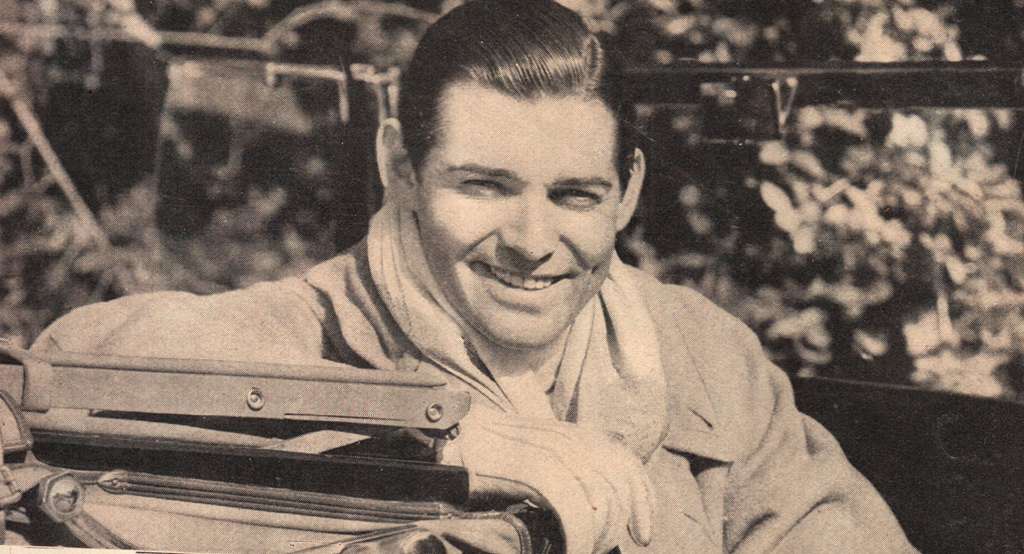
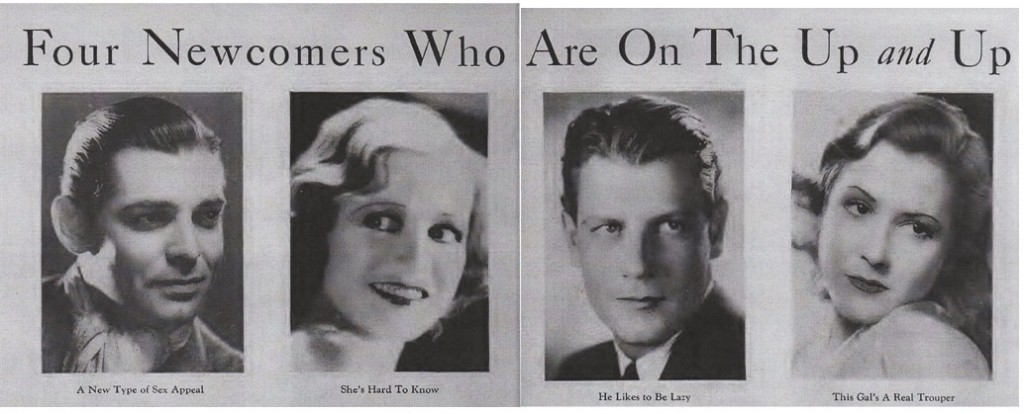
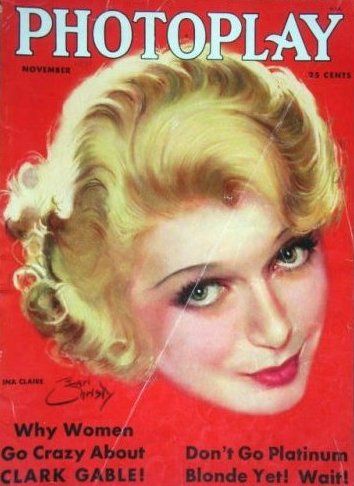
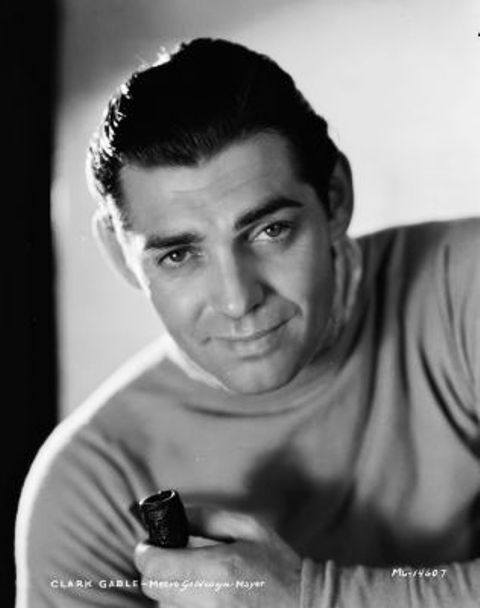

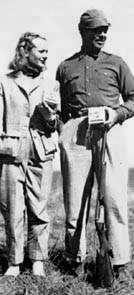
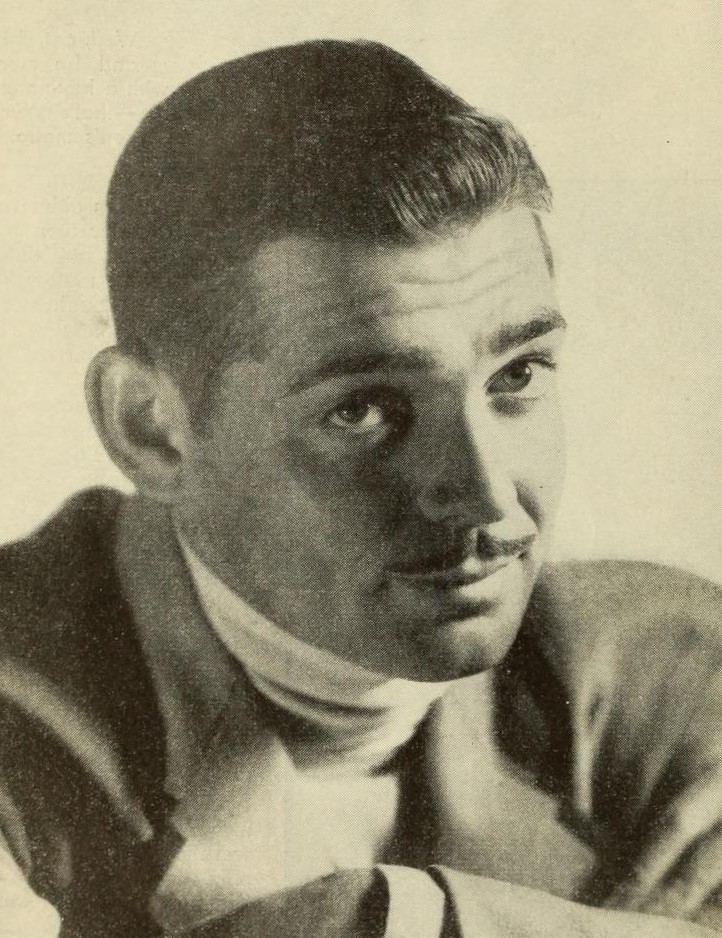
One Comment
Pingback: